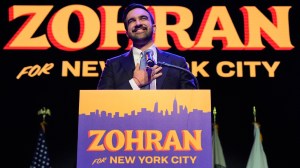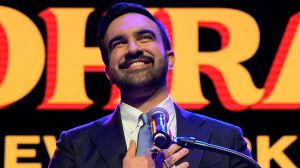‘Will move proposal to rename Talkatora Stadium’: BJP MLA Parvesh Sahib Singh
During the final leg of the recent Delhi elections, Singh, who was contesting against AAP national convenor Arvind Kejriwal, had proposed to rename the stadium after Maharishi Valmiki
 Talkatora Stadium is Delhi’s oldest indoor facility (Archive)
Talkatora Stadium is Delhi’s oldest indoor facility (Archive)The Talkatora Stadium, the national capital’s oldest indoor facility, may soon undergo a name change. On Tuesday, BJP MLA Parvesh Sahib Singh announced that by the next meeting of the New Delhi Municipal Council (NDMC), he has plans to put forward a renaming proposal.
After taking oath as an NDMC member, Singh, who is the MLA from New Delhi, said, “I have taken my oath today, and in the next NDMC meeting, we will bring up the matter of renaming Talkatora Stadium.”
During the final leg of the recent Delhi elections, Singh, who was contesting against AAP national convenor Arvind Kejriwal, had proposed to rename the stadium after Maharishi Valmiki.
“Talkatora stadium is very famous, many big events are held here, people from the whole country and world come here, so its name should be changed… many people from the Valmiki community have come forward with a proposal… So, after the 8th of February, in the first meeting of the NDMC, this proposal will be brought up and the name will be changed to Bhagwan Maharishi Valmiki stadium,” he had said.
Built in 1974, the stadium derives its name from the Mughal-era garden adjoining it.
The word ‘Talkatora’ originates from two Persian words: ‘tal,’ meaning a tank, and ‘katora,’ meaning a bowl-shaped natural depression.
According to historian Sohail Hashmi, there is still an embankment inside Talkatora Garden that was once used to control the water flow. “The embankment was made to collect the water that came from several streams of the Southern Ridge… this was possibly made by Firoz Shah Tughlaq… because he has done a lot of work on water infrastructure,” he said.
The garden has also witnessed Delhi’s tumultuous past. In 1737-38, it was a battlefield where the Marathas, in their attempt to raid Delhi, had advanced up to this point. Later, in 1803, the garden had become the centre of another battle between British General Gerard Lake and the Marathas, with the former gaining control over Delhi. The area witnessed clashes again in 1857 during the uprising against British rule.
Over the years, the medieval ruins of Talkatora, including two domed pavilions and scattered walls, have faded into obscurity. The construction of the indoor stadium and swimming pool during the Asian Games further cemented its name as a recreational hub. Today, the stadium, with a seating capacity of 2,700, is one of Delhi’s oldest indoor sports facilities, regularly hosting political gatherings and sporting and cultural events.
According to NDMC procedures, a name-change request must be submitted to its General Administration Department. The proposal is then placed before its 13-member Council for approval. If passed, it is sent to the Delhi government’s Urban Development department for final clearance. The whole process has been made in accordance with guidelines provided by the Ministry of Home Affairs (MHA).
Following the council meeting, NDMC vice-chairperson Kuljeet Chahal said, “We will collectively decide as a team. The proposals will first go to the MHA before a final decision is made.”
Asked about renaming other places, including Tughlaq Lane, where two BJP MPs had modified nameplates of the government-allotted bungalows to add ‘Vivekanand Marg’, Chahal said many proposals have been received from various individuals and organisations seeking to rename locations after freedom fighters, sages, and other eminent personalities.
Other proposals discussed by the council included plans to install more water connections in slum clusters that come under the NDMC’s jurisdiction, discussions on buying cheaper electricity, a summer action plan addressing waterlogging issues, a strict anti-encroachment drive, and expanding CCTV surveillance.







